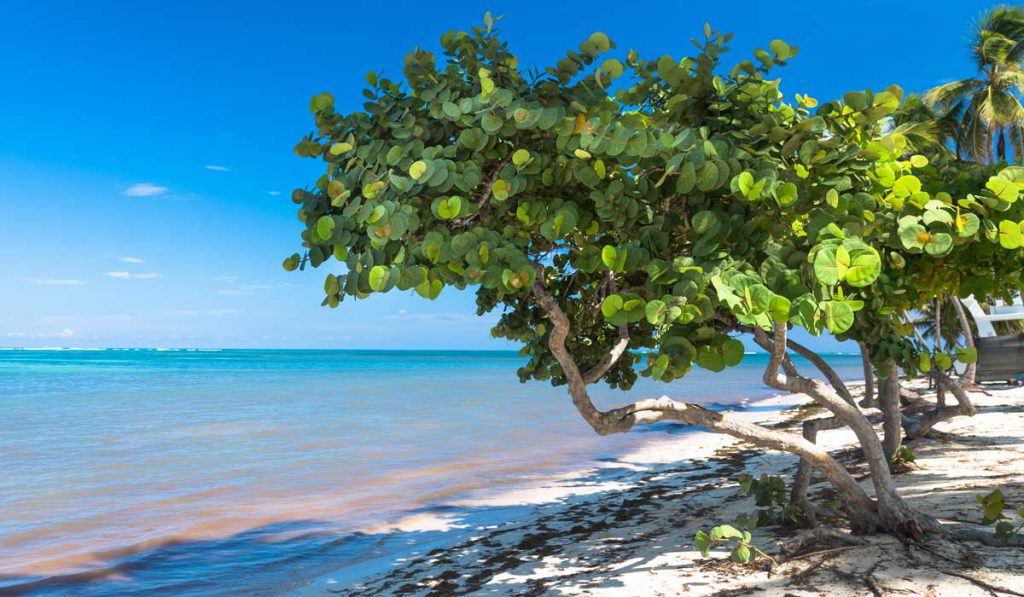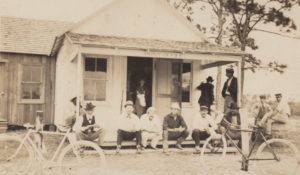Oh those purple berries! They are everywhere this time of year, but what are they? The Sea Grape (Coccoloba uvifera – also known as Uva de Playa in Spanish) bears grape-like fruit in bunches and is native to South Florida. It can be found in coastal hammocks and landscapes from central Florida southward. Sea grape fruits are eaten by many birds which disperse the seeds. The sea grape also provides a protective habitat on sand dunes for many animals, including beach mice.
The sap of the Sea Grape is used in the West Indies and Jamaica for dyeing and tanning. The edible fruits can be used to make preserves and wine, and the wood is sometimes used for firewood, making charcoal, and even cabinetry. However, the Sea Grape is most often used in landscaping as it is a popular ornamental in South Florida yards. It is also important as a dune stabilizer and coastal windbreak. Tall sea grape plants can form a valuable barrier between beaches and development on coastlines so that lights from the human structures will not reach the beach and disturb the nesting sea turtles.
It is said that the Sea Grape was the first plant encountered by Christopher Columbus when he discovered America. Exposed to the high winds of the beach, the plant grows sturdy and wide to embrace harsh conditions. Grown in a more sheltered location, the Sea Grape grows as a tree and can reach massive heights. Unlike grapes, the fruit ripens a few at a time and must be shaken or picked from the stem.
I remember as a child growing up in Delray putting a towel on the ground or holding my shirt out and shaking the tree to dislodge the ripe grapes and snacking on them September – October. The skin is a bit tough and purple, which covers a thin, peach-like pulp and large seed.
The best thing to do with these berries is make jelly. Here’s a recipe given to me by my mother. Ripe September through October, Sea Grape Jelly is highly coveted by native Floridians. It makes a special gift!




